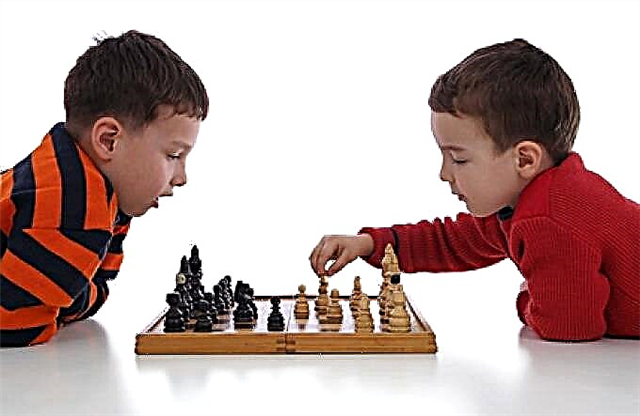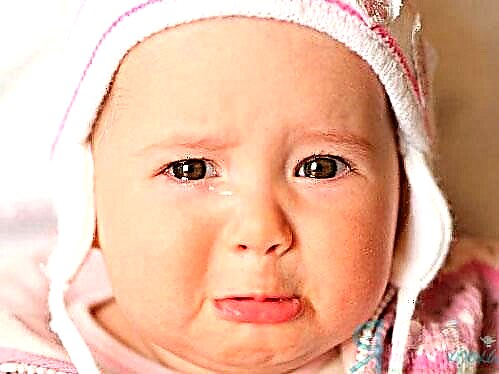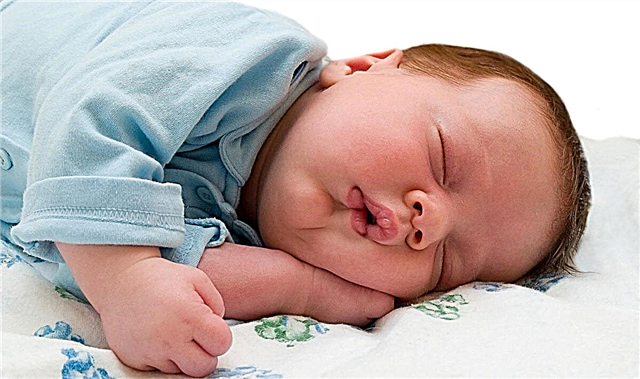
Due to the immaturity of their own immunity, babies under 3 years old get sick more severely than older children. Their local immunity is just beginning to learn to fight viruses, bacteria and allergens. Therefore, the baby reacts to almost any respiratory irritant with a reddening of the throat. How and how to treat such a child aged 1 to 3 years, we will consider in detail in this article.
Age features
The airways of a small child are completely unlike those of adults - the mucous membranes of the nasopharynx and larynx in babies are loose, saturated with blood vessels. When a bacteria or virus gets in, they become more inflamed. The anatomical narrowness of the larynx at this age creates an additional danger of the development of false croup, edema, stenosis, and, as a result, suffocation.
The nasal passages are also quite narrow, and if the baby has a runny nose (and this happens more often than the parents would like), then nasal breathing is almost always completely blocked. The baby begins to breathe through the mouth, which causes the mucus in the throat to dry out. This mucus is of vital importance to the immune system. Its task is to neutralize viruses and other pathogens that enter the body by the respiratory route. Dry mucus ceases to perform protective duties and becomes an excellent breeding ground for pathogenic bacteria

Sore throat causes
There can be many reasons for a sore throat. In the vast majority of cases, this is a viral infection. More than 500 viruses surround us, and "catching" one is a very simple task, especially with imperfect childhood immunity. Viruses cause a number of diseases in which a variety of throat symptoms can be observed:
- pharyngitis;
- herpetic sore throat;
- laryngitis;
- measles;
- chicken pox;
- scarlet fever;
- diphtheria;
- laryngotracheitis;
- flu and SARS.
Redness of the throat with a viral lesion is a clear indication of the work of local immunity. And from this point of view, it should be regarded as a normal reaction of the body in a particular situation.

Bacterial inflammation in the throat is much more severe. Fortunately, in children, they do not occur often, only about 10% of all complaints of sore throat, during detailed examination, become confirmed diagnoses with a certain bacterial or fungal pathogen. Most often, such ailments are:
- angina (and its many varieties, except herpetic);
- laryngeal candidiasis;
- pharyngomycosis.
Slightly more often than bacterial, and less often than viral, children have allergic problems with the throat. They are associated with prolonged exposure to an antigen that causes an inadequate response in the child's body. There are many allergens - from household chemicals used by mom to wash the dishes and laundry, to seasonal irritants in the form of pollen and tree pollen.

Treatment
How to treat a throat for a child from 1 to 3 years old will most accurately be known by the doctor, after prescribing a number of laboratory tests. To choose tactics and drugs, the doctor needs to clearly understand which pathogen caused the inflammation in the throat. To do this, swabs are taken from the oral cavity, from the tonsils and a swab from the back of the larynx. They will look for viruses in the sample, and some will be sent for bacterial culture, where they will try to grow a certain type of bacteria or fungus in laboratory conditions. In addition, the doctor may recommend taking a blood test, which will give an answer if the child's blood contains antibodies to certain viruses. All these measures will make it possible not only to accurately establish the diagnosis, but also to know with 100% accuracy which pathogen caused the disease.
This knowledge is extremely important, because viral lesions are not treated in the same way as bacterial or fungal ones. And everything depends on the correct treatment. Therefore, it is best to start treating a red throat in a child with a visit to the doctor.

Throat viral lesions
85% of all throat diseases are viral in nature. The treatment of such diseases depends on the views of a particular doctor. Some specialists immediately prescribe antiviral drugs, vitamins, local treatment of the throat with antiseptics. Others know that the effectiveness of antiviral drugs has not yet been proven and will advise parents to limit themselves to local procedures.
Modern medicine is leaning towards the position of second doctors.
The child's immunity, in order to develop and get stronger, is simply obliged to deal with various viruses, there is no other way to "teach" him. During illness, the child should create favorable conditions for recovery, and this, by and large, is quite enough.
In other words, he should be in conditions where he will breathe humidified air, where it will not be hot. Such a microclimate will help maintain a liquid consistency of mucus in the nose and throat, which means that local immunity will cope with its task in about 3-5 days.
A child with a viral disease must drink a lot. This additionally liquefies the mucous secretion and replenishes the loss of fluid in the body, which are always at high temperatures.

Thus, a reasonable treatment for a viral illness, including sore throat, should look like this:
- Air humidity in the room 50-70%, plentiful warm drink.
- High temperature - bed rest.
- Fever between the ages of 1 and 3 is quite dangerous on its own, but it is very necessary for the proper course of immune processes, so the temperature of 37.5 does not need to be lowered, and antipyretic should be given after the thermometer rises to 38.5. For this it is best to use "Paracetamol", "Ibuprofen".
- Local processing of the throat for children who do not know how to rinse it due to age can be carried out using the antiseptic Miramistin... In case of severe inflammation, it is recommended to treat the throat with Vinilin balm.
- Saline solution should be instilled into the nose as often as possible, which will protect the mucous membranes of the respiratory tract from drying out and thereby reduce the risks of complications of secondary infection. It is prepared simply: a teaspoon of table salt per liter of boiled chilled water. It is best for a one-year-old baby to bury the solution every 30-40 minutes, and children from 2 years old can spray the same solution, poured into a spray bottle, into the nose at the same frequency.
- Some children at 2-3 years old know how to gargle. Saline solution can be offered to them as a gargle.
- As soon as the temperature drops, you can start walking with your child. outdoors, it will speed up the healing process.

What cannot be done?
- Viral disease cannot be treated with antibiotics, since antimicrobial agents against viruses are not effective, however, they increase the likelihood of complications several times.
- Rubbing with fat or alcohol should not be done at high temperatures, soar the baby's legs, lubricate the throat with alcohol-containing solutions.
In the next video, Dr. Komarovsky talks about ways to treat throat in children. You can also read a detailed article with Dr. Komarovsky's recommendations on how to treat a red throat.
Bacterial lesion
Since microbial lesions of the mucous membranes of the throat are usually more severe than viral, they try to hospitalize such small children so that the baby can undergo treatment under the supervision of doctors. But even if you were left to receive treatment at home, it is very likely that the child will be prescribed antibiotics. Modern medicine has revised its approach to such therapy, and now they try to prescribe antibiotics only in extreme cases. Without an urgent need, it is recommended to do with local treatments.
Of the antimicrobial agents, drugs of the penicillin group are usually prescribed ("Amosin", "Amoxicillin", "Amoxiclav"). If the microbe is resistant to the action of penicillin, the doctor may give a prescription for macrolide antibiotics ("Sumamed" or "Clarithromycin"). In especially severe cases, or if penicillins and macrolides do not help, antibiotics are prescribed - cephalosporins (Cefazolin, Cefamezin, Cefuroxime).
Prescribing antibiotics does not mean that the child will receive injections. Most of these drugs are presented in syrups and suspensions. They are easy to dose and give to your baby. The medicine usually has a fruity aroma and a sweet taste.
To reduce the temperature, "Paracetamol" is recommended. You can treat the red throat with an oil solution of "Chlorophyllipt" (not to be confused with alcohol!). Vinilin also shows high efficiency in the treatment of angina. A child should be given water in case of heat, even if it is difficult for him to swallow. If you cannot get water, you should call an ambulance to fill the fluid deficit intravenously.
What can’t be done?
Do not interrupt the course of antibiotic treatment as soon as the child feels relief. With timely therapy with penicillins, a decrease in pain, and sometimes a decrease in temperature, can be observed already on the second day of treatment. However, it should be remembered that it is impossible to quickly cure bacterial infection, since not all bacteria have been destroyed by 2-3 days. If you stop taking the drug, the surviving individuals will develop resistance to this antibiotic, the next time the child will have to be treated with another medicine, stronger and more expensive. The risk of developing complications when interrupting the course is extremely high.
At high temperatures, warming compresses, alcohol or oil-based compresses should not be applied to the throat. Heat is an excellent breeding ground for bacteria, besides, warming up in heat disrupts the thermoregulation of the child's body.

Throat fungal infections
A white coating in the throat and complaints of dryness and severe itching should lead parents to think about a fungal infection. After confirming the version, the doctor will prescribe a very specific antifungal treatment. It is always carried out in a complex - local treatment and oral administration of drugs.
The tablets may contain "Fluconazole", "Intraconazole" (not indicated for children under 3 years of age, a drug that is prescribed only if the expected benefit is higher than the possible harm), "Nystatin". Spray "Pimafucin" or "Nystatin" can be sprayed into the mouth. The treatment is quite long - about 14 days. After that, the throat swab must be repeated to make sure that the entire colony of the fungus has died. If necessary, the course is extended.

What can’t be done?
Do not try to remove plaque or pustules from the throat on your own, as this can lead to bleeding and the spread of infection. It is contraindicated to interrupt the course of treatment.
Allergic lesions
If your throat is swollen and sore due to an allergy to something, treatment will focus on eliminating exposure to the allergen. If the real "culprit" - the antigen is not identified, parents will be advised to remove from the house all potentially dangerous things and factors that can cause an inadequate response of the body. You only need to wash your laundry with a hypoallergenic powder, wash floors without using household chemicals, chlorine-based chemicals are especially dangerous. Soft toys and carpets have no place in the nursery at all, as they quickly accumulate house dust. You may have to part with the cat or dog that live in the apartment.
From medicines, antihistamines ("Suprastin", "Loratadin") can be prescribed. For severe allergies, the child may be given hormone therapy.

Treatment with folk remedies
When choosing a folk remedy, you should definitely consult a doctor. Most likely, he will give the go-ahead for procedures that do not pose a danger to the child. These include gargling with herbal decoctions. A child at 1.5 years old, of course, cannot afford this method, but from 2-3 years old you can try. It is worth mentioning right away that this treatment should be auxiliary, it cannot be considered independent, herbal rinses also do not affect the speed of recovery.
A child from 1 to 3 years old can prepare decoctions of chamomile, sage, plantain or mint. Honey gargles should be used with great care, as bee products themselves are quite allergenic. Herbal and honey rinses are not recommended at all if the child is allergic. Rubbing a child and making him compresses with badger fat in the heat is dangerous to health, like vodka rubdowns, since such methods violate thermoregulation.

About inhalation
Inhalations, which are so popular among mothers, are ineffective and sometimes dangerous for throat diseases. Steam inhalation should not be used at high temperatures, with bacterial infections, with fungal infections. If there is a device at home - a nebulizer, then you should know that the fine particles that it produces during operation penetrate into the lower respiratory tract, therefore the device is excellent for treating diseases of the bronchi and lungs with the spraying of pharmaceutical drugs. In the treatment of throat diseases, a nebulizer is practically useless.
Do not inhale at all if there is no inhaler in the house. Attempts to make the baby breathe over boiled potatoes or a bowl of boiling water can result in a burn of the respiratory tract. And this will significantly complicate the recovery process, and may lead to more sad consequences.



